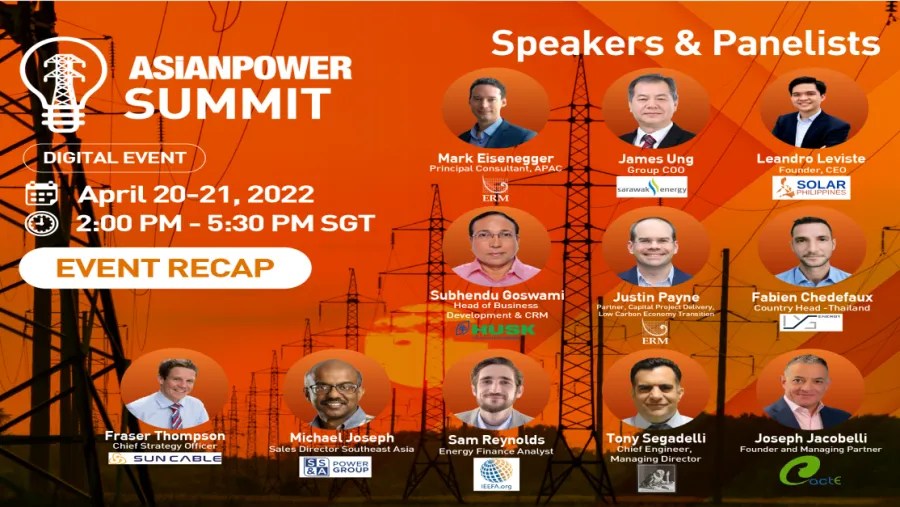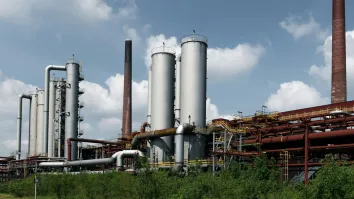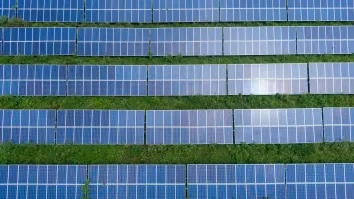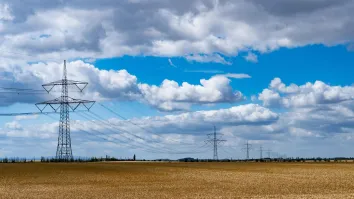
Regional grid connection can boost energy transition, economic growth
Having a 15% regional grid connection will create 870,000 jobs.
A range of technologies are available for the Asia Pacific (APAC) markets for their shift to cleaner energy sources, but experts are emphasising the need to integrate a regional grid connection. This would address energy transition needs and support economic growth by creating more jobs.
APAC lags in terms of cross-border connectivity. The average of the region’s nodes connected to a network is only 0.3%, whilst Europe is 12% with a target of 15% interconnection by 2030, Fraser Thompson, chief strategy officer at Sun Cable, said at the Asian Power Summit.
Assuming APAC has a 15% interconnection target similar to Europe, this would help the region avoid 3,070 metric tonnes of carbon dioxide by 2040.
The drastic decline in the prices of renewables technology—such as solar and energy storage, and high-voltage, direct current (HVDC) electric transmission cables—presents more opportunities for the region to step up grid integration, Thomson said.
READ MORE: Why are Asia's decarbonisation efforts falling short
Grid interconnection would require $116b in investments in transmission networks and could create 870,000 jobs, he added.
Thompson noted that Laos exports 47% of hydropower to Southeast Asia, and Bhutan exports around 50% of hydropower to India. Japan and Korea are not exporting or importing electricity, whilst China imports 0.1% of its electricity.
Utility solar costs reduced by 81% from 2010 to 2020, with PV modules falling by 93%, Thompson said. Lithium-ion cell costs rapidly decreased by 87% from 2010 to 2019.
For HVDC, cable voltage increased by around 10% annually over the last 20 years, which meant fewer transmission losses of energy over long distances. Depth of cable laying rose to 3,000 metres, whilst fault rates declined by 80% in the same period.
Improved electricity supply
A project requiring over $22b in investments aims to supply zero-carbon electricity from Australia to Singapore. Once completed, it will be the world’s largest solar farm of 17 to 20 gigawatts (GW); the largest battery with a 36 to 42 GW-hour capacity; and the longest undersea cable of 4,200 kilometres dispatched to Singapore through Indonesia.
This is Sun Cable’s flagship project called Australia Asia (AA) Powerlink, located at Power Creek, Northern Territory in Australia.
The AAPowerLink Solar Precinct covers 12,000 hectares of land in the Northern Territory. Supplying Singapore’s total electricity demand by 2040 would require less than 0.05% of the Northern Territory’s landmass, and less than 1% to meet Southeast Asia’s energy demand, Thompson said.
“Because of the HVDC improvements, we now have the ability to access an incredible resource and share it with the rest of the world,” Thompson said.
“We have a great solar resource in the Northern Territory, but importantly, a scalable resource that can meet the demand magnitude that we're expecting to see in Asia over the coming decades,” he added.
Asia’s solar potential
In Southeast Asia, the Philippines is the most “fundamentally attractive” for the solar energy market as the power generation costs are double compared to other countries, Solar Philippines CEO Leandro Leviste said.
Due to this, the company will be more focused on developing the Philippines’ solar market despite engaging in solar development projects abroad such as in Indonesia.
“It’s vital for us to focus on saturating our home grid with solar energy and branching out to other markets, once the power prices in the Philippines have been saturated by the influx of solar,” Leviste said.
The Philippines targets renewable energy to account for 35% of the total energy mix by 2030, 20GW of which will be solar. Currently, the government is leading auctions for solar development.
“It's the private sector that is lagging in terms of implementing the sufficient supply to meet the demand that has been set by these policies,” he said.
For Thailand, Fabian Chedefeaux, country head at LYS Energy, said the country is reliant on burning fossil fuels, with renewable energy accounting for 18.6% of the gross energy generation and purchase as of November 2021, citing data from the Electricity Generating Authority of Thailand.
The solar adoption trend in Thailand is “going upward,” Chedefeaux said. This is because of increasing environmental awareness and concern, cheaper electricity costs from solar, and the local government’s incentives for sustainability efforts.
“The price of electricity in Thailand can fluctuate every three months based on the structure of the tariffs. So having solar can eventually stabilise the cost of electricity,” he said.
Subhendu Goswami, Head of Business Development & CRM at Husk Power Systems, said the company is focusing on providing power to areas not connected to the grid, especially in India. The company introduced solar power to its system which helped “generate power at virtually no cost.”
Husk Power also introduced a smart metering system which helped reduce human interference and reduced capital and operating costs.
Goswami added that the rooftop solar system and solar pumpkins system would be game-changers for India.
Hydropower, hydrogen economies
Malaysia’s Sarawak Energy operates mainly on hydropower to ensure a balanced and sustainable generation mix, with hydropower accounting for 70% of its total. This is complemented by the thermal resources of coal and gas.
This makes the company Malaysia’s largest renewable energy developer, according to Sarawak Energy Group COO James Ung.
“We maintain energy affordability by providing amongst the most competitive tariffs in the region by leveraging on hydropower development,” Ung said.
The large-scale renewable hydropower energy enabled Sarawak Energy to decarbonise its power system, with over 70% reduction in carbon emission intensity from 2010 to 2020. Ung said that they aim to increase renewable energy share and reduce emission intensity by 45% by 2030.
Sarawak's efforts to increase renewables include investing in a 50-megawatt floating solar farm, biomass, mini-hydro, and green hydrogen production and export, to position the company as the “hub for the hydrogen value chain.”
“We aspire to become a regional powerhouse by advancing renewable hydropower development and becoming the battery of ASEAN. We are focused and moving forward with our plan to establish an interconnected Borneo via the Borneo Grid, and subsequently, the ASEAN Grid,” he said.
Another technology being looked at to decarbonise energy, industrial, and transport sectors is hydrogen. Michael Joseph, Sales Director in Southeast Asia at SS&A Power Group, said that the global green hydrogen market is expected to reach $10.2b by 2028 at a compound annual growth rate of 55.2%, citing a report by Facts & Factors.
Joseph noted that the European Union has committed to ramping up green hydrogen and building at least 6GW of electrolysers by 2025, generating 1 million tonnes of green hydrogen.
The European Union plans to increase electrolysers to 40GW by 2030 and produce 10 million tonnes of green hydrogen.
For Asia, he said South Korea stands out as the world leader in the hydrogen economy as a future massive importer of hydrogen by 2050, whilst Japan targets to reduce the cost of hydrogen from around $3 per kilogram in 2030 to about $2 by 2050. China targets to produce 200,000 tonnes of green hydrogen by 2025, whilst the Malaysian government has crafted its hydrogen roadmap.
The price of green hydrogen is currently ranging between $3 to $5 per kilogram and is targeted to be further reduced to $1. Joseph said this could be possible by using low-cost off-peak renewable energy and through carbon pricing.
“To reach these ambitious targets and to increase it by multiples, we need the support of government agencies and industrial organisations,” Joseph said. “We need to have a political framework that supports the hydrogen market ramp-up.”
Justin Payne, partner, Capital Project Delivery, Low Carbon Economy Transition at ERM–APAC, said that hydrogen is potentially the vector for the energy transition in the region. He noted that Australia can produce green hydrogen and work out the best vector to ship to neighbouring countries.
The development of hydrogen today is “fairly limited” but there are large portfolios of projects at various stages of development that would enable its production in the coming decade, Payne said.
LNG as a replacement for domestic gas
Sam Reynolds, Energy Finance Analyst at the Institute for Energy Economics and Financial Analysis, said that emerging Asia will play the most important role in the demand growth for liquefied natural gas (LNG). South and Southeast Asia are expected to account for a combined 190 million tonnes of demand from now until 2040.
This is because many countries across the region are facing rapidly declining domestic gas production. For example, the Philippines, Bangladesh, and Thailand are all “within five years of wells running completely dry” and have turned to LNG as the “most convenient replacement” for domestic gas. Countries like Pakistan, Myanmar, and Vietnam have significantly more reserves but are having trouble developing them.
LNG has been promoted as a “bridge fuel” from coal to renewable energy alternatives, Reynolds said. He cited AG&P LNG in the Philippines which claimed that renewables are highly volatile and LNG is more reliable and affordable as a power supply.
The United States Agency for International Development (USAID) claimed in a white paper that US LNG would cost under $6 per MMBtu to be delivered to the Philippines.
“That is a ridiculous price when considering that it includes the gas costs, the liquefaction fees, as well as the shipping costs from the US to Asia,” he said. “The result of these rosy macro fundamental and upstream circumstances in the region is that we've seen a frenzy of proposed infrastructure investments in the LNG sector.”
Reynolds said that there are $380b of ongoing gas infrastructure investments in Asia and 80 million tonnes of import capacity are aimed to be completed in the next two years. However, he noted that LNG projects have “historically been very difficult to get off the ground” and often take decades.
There are other risks in LNG imports, such as massive potential reserves in the region. If domestic gas production resumes, it may render import infrastructure unnecessary. There is volatility in prices which creates major budgetary risks.
This is compared to the price of historically produced gas in the region's reserves which has been easy to develop, and as a result, countries pay very low prices. “LNG is not just an easy replacement fuel, but it's instead a steep structural increase in the price of fuel, and a knock-on impact, the price of power in many of these countries,” Reynolds said.
Europe could become Asia’s direct competitor in the LNG market as it veered away from importing LNG supply from Russia following its invasion of Ukraine, Reynolds said. He added that the competition for cargoes could force emerging Asian customers out of the market in the coming years, leading to a heightening of energy and security risks as well as stranded asset risks
“For many countries, LNG is a bridge fuel that may never be built because of these economic and financial considerations. That must be considered when you're talking about price sensitivities and volatility of this global commodity,” he said.
Tony Segadelli, chief engineer and managing director at OWL Energy said, LNG will remain a major player citing the Philippines where various companies are building LNG terminals. With the expected demand for power, Segadelli said that renewables will be taking up a significant portion of the energy share.
Transition, investment challenges
Globally, 73% of greenhouse gas emissions come from the energy sector, according to Joseph Jacobelli, founder and managing partner, Asia Clean Tech Energy Investments Company Limited.
Asia accounts for 46% of energy consumption around the world. Emerging markets accounted for 85% of the generation share in Asia and are expected to increase to 95% by 2050, according to Jacobelli.
The downside factor to the rise in energy consumption is when the governments implement energy efficiency, the region could see a “cap on that potential massive growth in electricity demand.” The upside factor to this is the increased electrification, particularly in the transport sector.
“It's a complex kaleidoscope of economic, environmental, financial and fiscal challenges and all of these are intertwined. There's overwhelming pressure from governments to keep prices low and have a reliable supply. The key is to have a multidisciplinary approach, it's absolutely imperative to do that in order to have a net-zero strategy,” he said, adding that investments in digital solutions and technologies should come in.
Jacobelli presented an Energy Transition Pyramid for attaining net-zero carbon emission targets. It must be supported by government policy, regulation, and institutions, he said. This is followed by the need of having financing and regulatory compliance, technical and technological reliability, cost of production and cost to end-user, before getting to net-zero carbon emissions.
With the Russia-Ukraine war, Jacobelli said Asia may experience a slower deployment of clean energy resources in the short-term due to the higher inflation, increasing secondary interest rates that push the prices of materials used to build renewable energy, and supply chain disruption.
In 2020, Asia accounted for 46% of the total global imports of primary energy, 58% for global crude oil imports, 79% for global coal imports, and 71% for the global imports of liquified natural gas, according to Jacobelli.
However, in the long-term, Jacobelli said the conflict has heightened urgency on the part of the governments to address reliance on fossil fuels. Governments have grown more concerned about high price volatility, high pollution, and low energy security. New clean energy solutions such as distributed energy and green hydrogen, are being pushed more quickly.
Mark Eisenegger, principal consultant, APAC at the Environmental Resources Management, identified factors and risks that influence managing renewables and subsea cable projects.
Obtaining permits and approvals is one of the critical parts of project management and it is important to understand permits and approvals policies specific to the place a project is operating.
Managing environmental and social financing requirements, and meeting corporate and stakeholders have to be addressed and identified early in the project.
Eisenegger said that it is important for a project team to engage in the process of creating the design envelope for a project. This is a balance between trying to ensure that land use is maximised using the best technologies to meet capacity requirements, and “creating a bit of a buffer within your own approvals and permit to enable flexibility later.”
“Taking early action on [climate-related threats] will enable the projects, and investors, to manage risks, and see opportunities that are already present,” Eisenegger advised.



















 Advertise
Advertise







